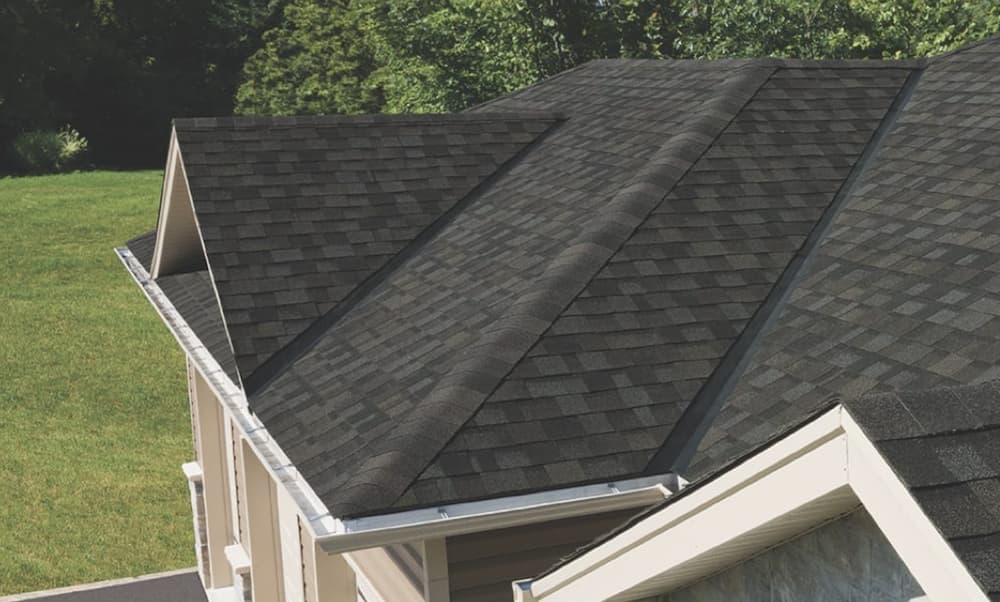How To Choose Between Roofing Valley Techniques in the Durham Region
The roofing valley is a critical point of any roof system. It is the point where two roof planes meet, and it needs to be installed appropriately to ensure that your roof can protect your home from water damage and leaks. Learn how to choose between roofing valley techniques when roofing in the Durham Region so you can make a more informed decision on the construction quality of your roof installation.
There are two main types of roofing valley installation techniques, namely:
- Closed Cut Valleys
- Open Metal Valley
Valleys are the most vulnerable part of the roof and the most difficult to install. They form the point where two roof planes meet and need to be properly installed to ensure that your roof can protect your home from water damage. They are prone to leaks and water seepage if not correctly installed.
Different roofing companies in Oshawa have varying opinions on which type of valley installation is the best. Some recommend closed-cut valleys arguing that they are more durable, while others recommend open metal valleys for their aesthetic appeal. Here is a detailed look at each of these valley installation methods to help you decide which one is the best for your home.
Closed cut valley
You can identify closed roof valley techniques (as shown below) from the line that runs straight down 6 cm to the right of the valley.

To execute a closed valley roofing technique, the shingles are installed 30 cm past the valley on the first roofing plane. The shingles on the second roofing plane are then installed with an overlap 6 com past the valley. The shingles are cut in a straight line, down the roof on the second layer.
While this can be effective to prevent water damage and leaks for most types of shingles, it’s not the best choice for others. For example, laminate shingles may not sit well in the valley. This can cause a lift and eventually lead to a less than airtight water seal. (read more on roofing tips in the Durham Region)
Pros:
- Faster option because there are fewer steps in open valley roofing techniques.
- It is a more aesthetically pleasing option because it results in a neater-looking roof.
- Less expensive option if the roofer doesn’t have trouble cutting the shingles on the second layer.
Cons:
- Laminate shingles may not bend properly and therefore will not fit well in the valley.
- Thicker shingles on the first roofing plane may not sit well under the second layer.
- It requires a skilled professional to make a leak-free installation.
Open metal valley
You can easily spot open metal valley roofing because each valley is clearly defined since there is a metal flashing running from top to bottom of the roof. Many homeowners prefer this method from an aesthetical standpoint because each part of the roof is clearly defined. The open metal valley technique provides more durability, protection and longevity to your roofing installation.

To achieve this look, a layer of metal flashing is installed over the valley. The shingles are then installed and cut back from the flashing, leaving it open.
This design allows water to flow freely through the valley while protecting against leaks. Some homeowners prefer the look of an open valley, as it can add character to the roof.
Pros:
- Open metal valley roofing techniques are a more durable option and less likely to leak than closed-cut valley roofing techniques.
- It can accommodate different types of roofs, including shingle, tile, and slate.
Cons:
- It requires more materials and takes more steps making it take longer to install.
- More expensive.
- It can be challenging to find a professional who is experienced in installing open metal valleys.
- Not convenient for different roof pitches of 3:12 or steeper.
When deciding between roofing valley techniques, there are a few things you should take into consideration. The most crucial factor is the climate in your area – if you live in an area with a lot of snowfall, you’ll want to choose a technique that will allow the snow to drain off the roof quickly.
Another factor to consider is the type of shingles you have – if you have organic shingles, you’ll want to avoid using a metal valley, as the weight of the metal can damage the shingles. Finally, you’ll also want to consider the slope of your roof – if it’s very steep, you might want to use a different roofing valley technique altogether.
Which roofing valley technique is best for your home?
Roofing contractors in Pickering, Ajax, Bowmanville and Courtice might have different preferences for roofing valley techniques-especially if they’re not skilled enough to use one. Some contractors may be more experienced with one approach than another, so you’ll want to make sure you hire a contractor who is familiar with the roofing valley technique you’re interested in.
If it’s in the budget, the open metal valley roofing technique is the better choice because it is a more durable option and less likely to leak than a closed-cut valley.
It can accommodate different types of roofs, including shingle, tile, and slate, without any hassles. It is harder to install, so they are the more expensive option. Like any wise investment, they will pay you back over time.
